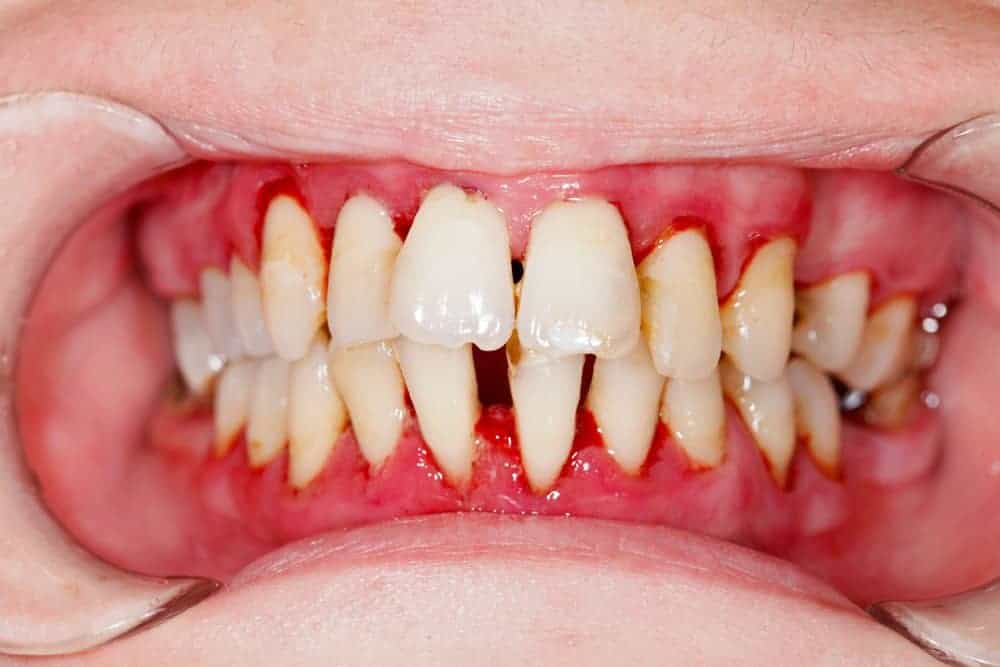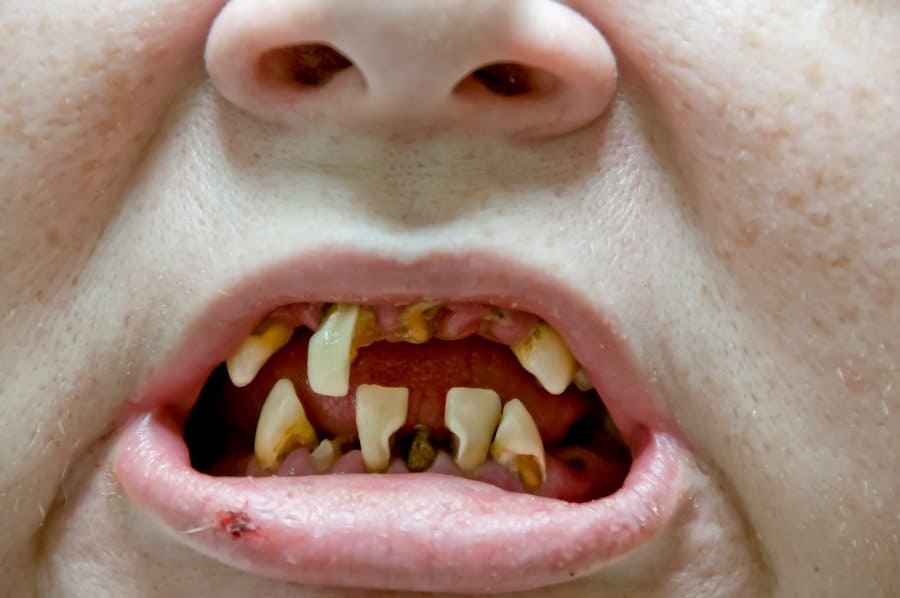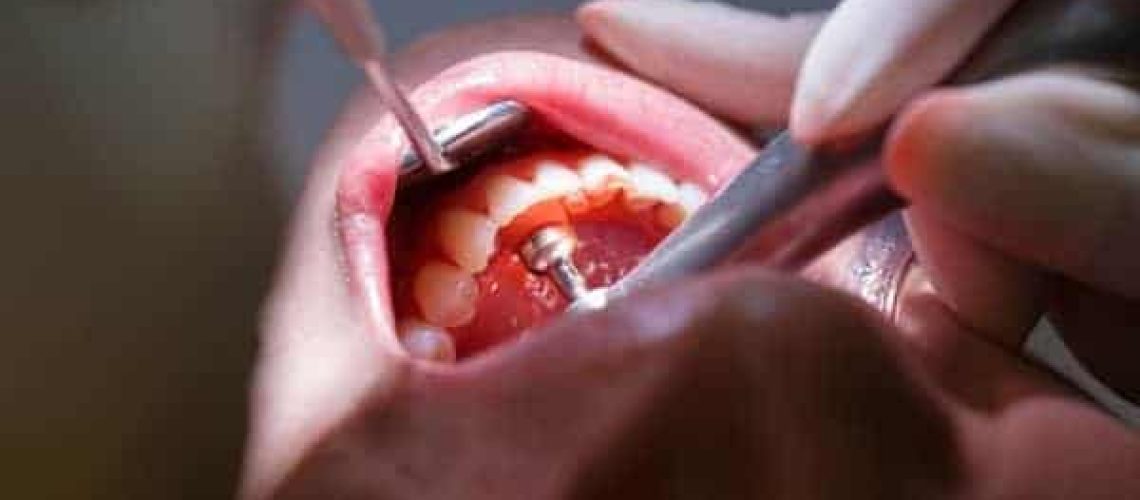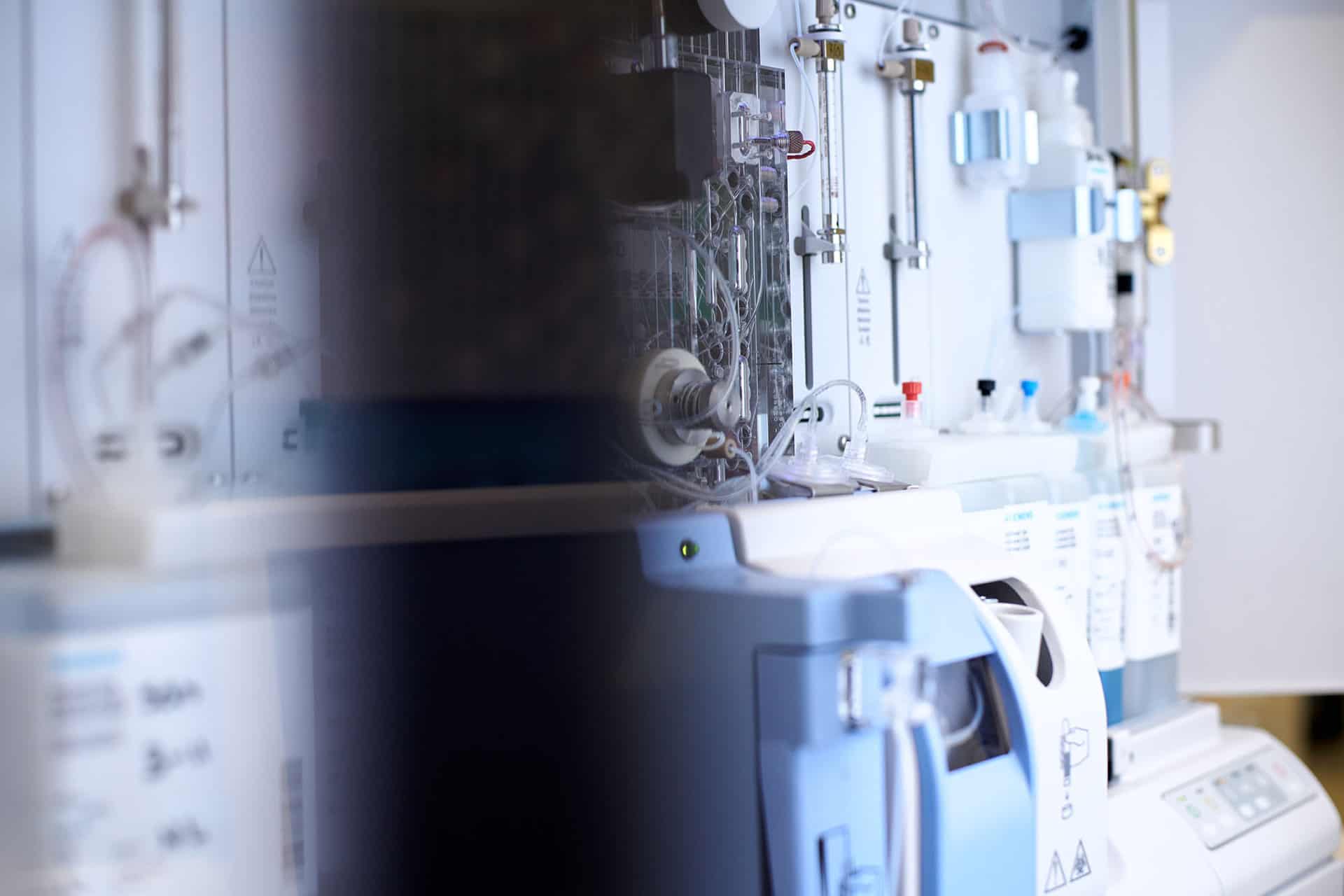Periodontal disease is commonly referred to as “gum disease”, “gingivitis”, and “periodontitis”. These terms are usually correct, but there are some technicalities that need to be cleared up.
- Gum disease – A synonym for periodontal disease.
- Gingivitis – The first stage of periodontal disease (usually accompanied by mild symptoms, often reversible)
- Periodontitis – The advanced stage of gum disease (usually accompanied by severe symptoms, often irreversible)
Periodontal disease results from plaque building on the gums. However, it is not plaque that causes the symptoms of periodontal disease. Rather, it is inflammation, a natural reaction your body creates as a way of fighting infection.
As too much plaque builds up on the gumline, the body releases a hormone that causes the gums to become inflamed.
Gingivitis

Gingivitis is the first stage of periodontal disease and, as stated above, is usually mild and can be reversed.
Symptoms of Gingivitis
- Discolored gums (usually purple or bright red)
- Slight pain or tenderness of the gums
- Swelling of the gums
- Bleeding when brushing your teeth
- Halitosis (bad breath)
- Receding gumline
Causes
Poor dental hygiene is the most common cause of gum disease. However, there are other possible causes as well.
- Changes in hormones as a result of puberty, menopause, pregnancy, or menstrual cycles
- Diseases such as HIV, diabetes, and cancer
- Smoking
- Age
- Poor diet
- Genetics (some families have a history of developing periodontal disease)
Treatment
Gingivitis treatment usually involves the thorough removal of plaque and tartar from the teeth and gums in a process known as “scaling”.
Often your dentist will recommend follow-up treatments and regular dental cleanings to expedite the healing process and prevent gingivitis from recurring.
Periodontitis

If gingivitis is not treated and left to progress, it will eventually develop into periodontitis. This is an advanced form of gum disease that is usually painful and non-reversible (although still treatable).
Symptoms
- Gums that are very painful to the touch
- Excessive bleeding, especially when brushing
- Gum recession to the point that the teeth shift and become loose
- Tooth loss
Treatment
Periodontitis is unlikely to be reversed, however, there are still numerous forms of treatment that can help manage periodontitis.
Thorough dental cleanings are necessary to prevent damage to surrounding bone structures, as well as improved daily oral hygiene and lifestyle changes like quitting smoking and improving one’s diet.
Other treatments include:
- Scaling – This is the process of removing tartar and bacteria from the teeth and beneath the gumline. Various instruments can be used to perform scaling, including ultrasonic devices and dental lasers.
- Root planing – This treatment involves smoothing the root surfaces, making it more difficult for tartar and bacteria to build up. It also removes byproducts of bacteria that lead to further inflammation and impede healing.
- Antibiotics – Oral and/or topical antibiotics can be used to control bacteria and reduce infection. Topical antibiotics can be in the form of gel insertions and/or antibiotic mouth rinses.
No matter what stage of periodontal disease you may be suffering, it’s never too early or too late to contact your local dentist.





